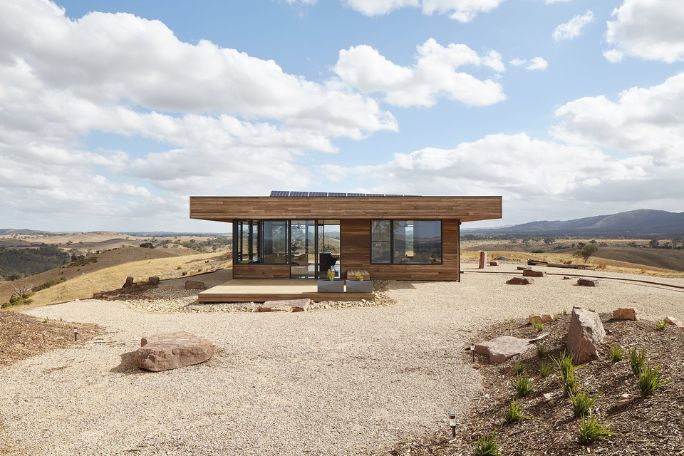Lesson summary
Students conceptualise a bushfire-resistant house that addresses the impact of bushfires on people, communities and property.
This set of resources challenges teachers and educators to expand their practice by utilising the design process methodology – an engaging, self-directed learning structure that guides students towards becoming experts so that they can ultimately design solutions that have a positive impact on people and communities.
This lesson guides students through the process of drafting, reiterating and elaborating on their ideas for bushfire-resistant housing. In order to identify the best possible solution, students explore multiple concepts, identifying limitations, exploring alternatives and streamlining their designs.
Learning intentions:
Students understand...
- how bushfire resistant building principles are practically implemented
Success criteria:
Students can...
- choose with justification materials, layouts and features that increase the bushfire-resistant properties of a building
- create visual plans for a home that clearly communicate to an audience the bushfire-resistant principles employed in its design
Lesson guides and printables
Curriculum links
Select your curriculum from the options below.
Lesson details
Curriculum mapping
Australian curriculum content descriptions:
Years 7 and 8 Design and Technologies:
- Generate, develop, test and communicate design ideas, plans and processes for various audiences using appropriate technical terms and technologies including graphical representation techniques. (ACTDEP036)
Visual Arts:
- Experiment with visual arts conventions and techniques, including exploration of techniques used by Aboriginal and Torres Strait Islander artists, to represent a theme, concept or idea in their artwork (ACAVAM118)
- Practise techniques and processes to enhance representation of ideas in their art-making (ACAVAM121)
- Present artwork demonstrating consideration of how the artwork is displayed to enhance the artist’s intention to an audience (ACAVAM122)
Syllabus outcomes: T4.2.1, T4.2.2, T4.5.2, VAS4.1, VAS4.3, VAS4.4, VAS4.5, VAS4.2
General capabilities: Critical and Creative Thinking, Personal and Social Capability
Cross-curriculum priority: Sustainability
Relevant parts of Years 7 & 8 Design and Technologies achievement standards: Students generate and document in digital and non-digital form, design ideas for different audiences using appropriate technical terms, and graphical representation techniques including algorithms
Relevant parts of Years 7 & 8 Visual Arts achievement standards: Students explain how an artwork is displayed to enhance its meaning. They demonstrate use of visual conventions, techniques and processes to communicate meaning in their artworks.
This lesson is part of the wider unit of work Beyond the Bushfires: Bushfire Resistant Housing
Time required: 105 mins
Level of teacher scaffolding: Medium – Facilitate class discussion, support student thinking, scaffold students through tasks and resources.
Be aware that the Design Process challenges the traditional roles in learning of instructors as the main disseminator of information and students having reduced agency. In this model, the instructor’s task is to challenge students’ pre-conceived ideas, foster their curiosity, pose challenging questions, and provide support and guidance to students as they are self-directed in pursuing knowledge.
Resources required
- Design Document – physical or digital – one copy per student
- Device capable of presenting a video to the class
- Handling Sensitive Topics and Issues factsheet
Skills
This lesson is designed to build students’ competencies in the following skills:
- Communication
- Creativity
- Critical thinking
- Collaboration
- Digital literacy
- Enterprise
- Adaptability
- Problem solving
Additional nfo
In partnership with The Conversation, the Beyond the Bushfires series brings the words of scientists who are actively involved in research and science communication into classrooms throughout Australia. Students will explore evidence-based research embedded in the context of real-world practice.
Additional thanks to the Ian Potter Foundation, John T Reid Charitable Trusts and The Myer Foundation, for generously supporting the development of these lessons.


Welcome back!
Don't have an account yet?
Log in with:
Create your free Cool.org account.
Many of our resources are free, with an option to upgrade to Cool+ for premium content.
Already have an account?
Sign up with:
By signing up you accept Cool.org's Terms and Conditions(Opens in new tab) and Privacy Policy(Opens in new tab).